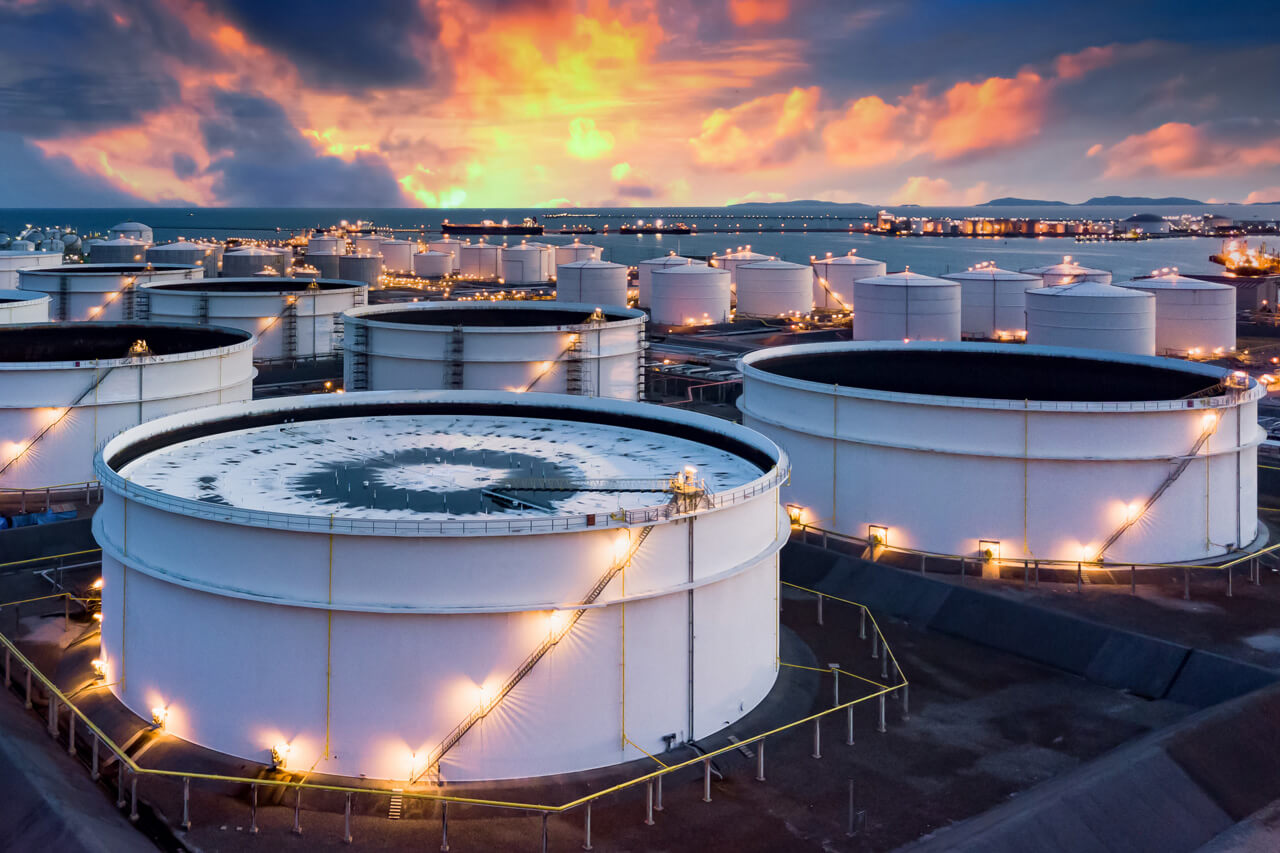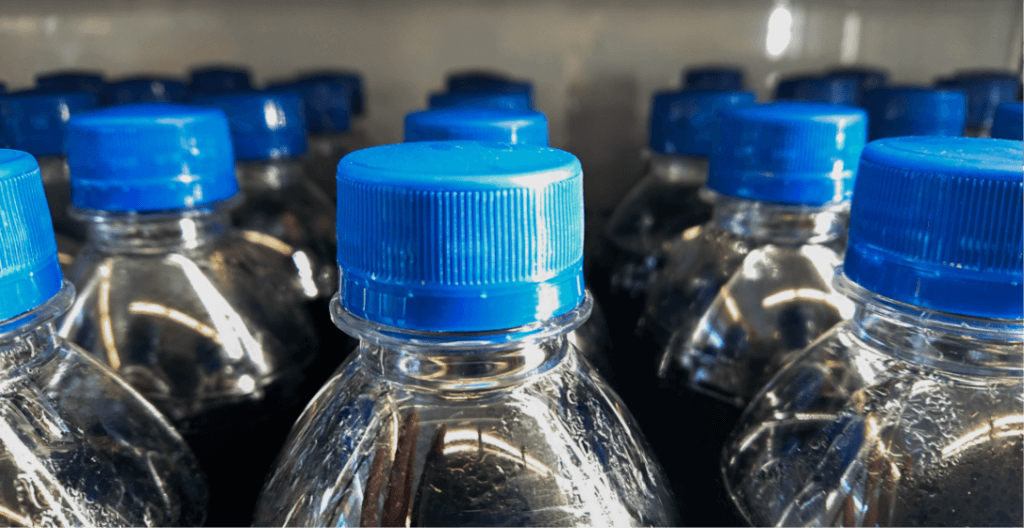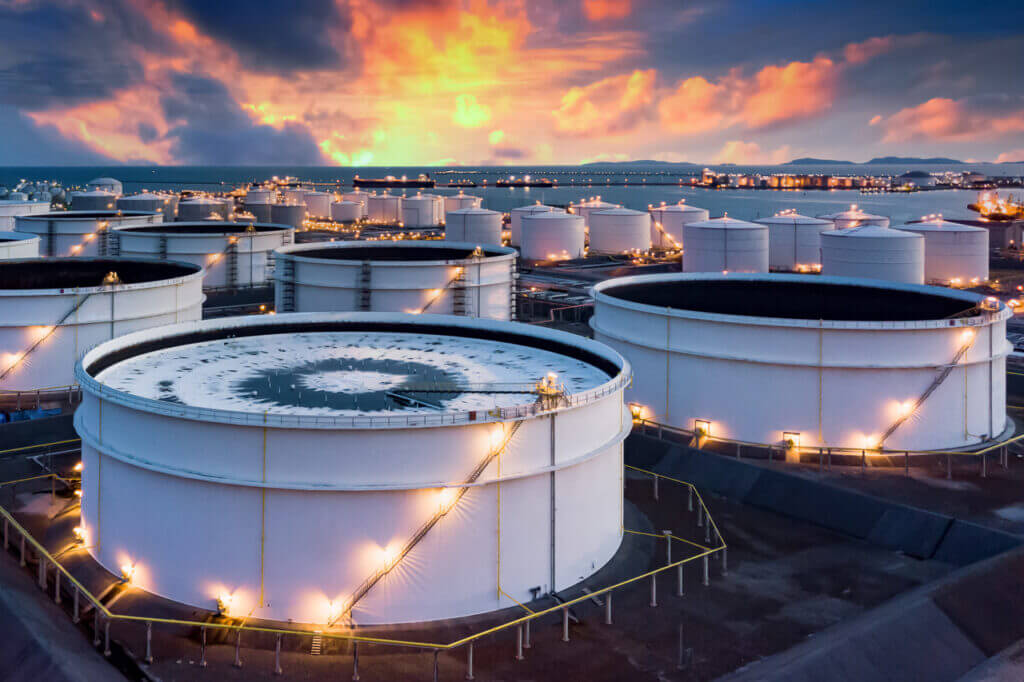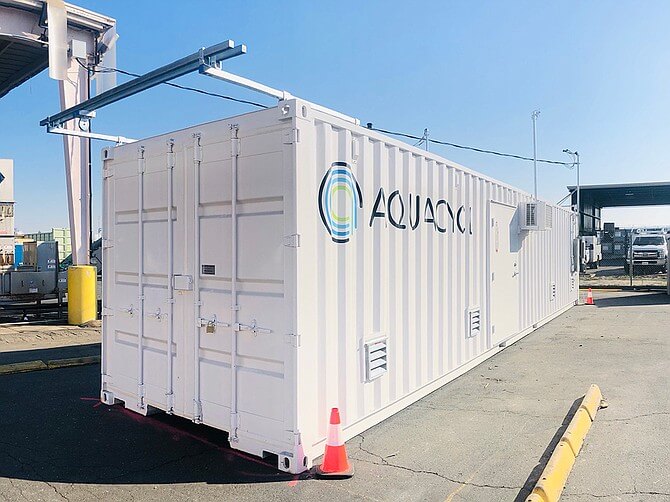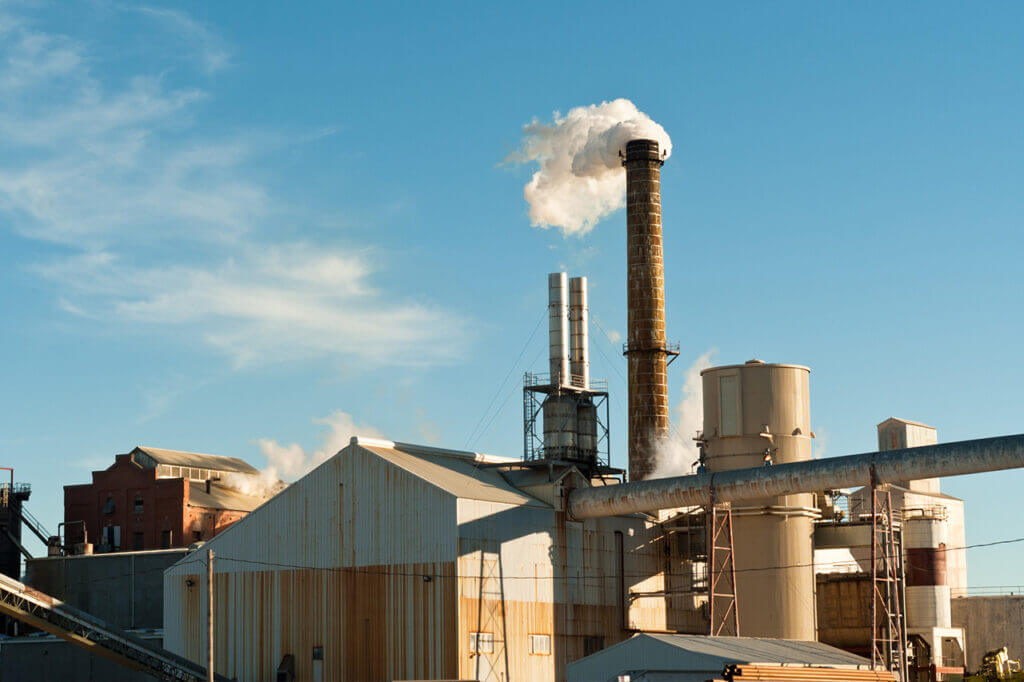reduction in GHG emissions during treatment
reduction in energy costs for treatment
reduction in secondary sludge generated during treatment.
The Situation
A leading tank terminal operator with a commitment to innovation and sustainable infrastructure wanted to validate Aquacycl’s BioElectrochemical Treatment Technology (BETT®) to treat wastewater from hydrocarbon storage. The primary objective of the pilot was to demonstrate the BETT system can be used to achieve permit discharge compliance.
The system was evaluated under different operating conditions over four months, including a stress test which added tank sludge and concentrated ether (both of which are currently being hauled away) to estimate the maximum removal rate.
During the operational period, the following measurements were conducted:
- Continuous measurement of pH, flow rate, conductivity and temperature
- Chemical oxygen demand (COD)
- Total suspended solids (TSS)
- Hydrocarbons, Aromatics, Alcohols
- Heavy metals
The Solution
Aquacycl installed a pilot-scale BETT® system to treat a side-stream of wastewater from one of the company’s facilities.
Aquacycl’s BETT system provides a sustainable wastewater management for challenging industrial wastewaters. The system operates with very low power consumption, and generates direct electricity, resulting in mitigating up to 50% of greenhouse gases that would otherwise be generated by use of conventional approaches. Aquacycl provides wastewater treatment as a service, with mutually agreed KPIs and includes real-time remote monitoring and control, regular maintenance, repair and annual sludge management.
The BETT systems use natural bacteria to clean the wastewater, reduce sludge and produce direct electricity (no methane). Locally sourced bacteria break down organic matter in the wastewater and release electrons during their natural process of respiration. The released electrons are captured as direct current and can be used to offset the power consumption of the system.
The system is remotely monitored and controlled to ensure system performance and offsite troubleshooting capabilities.
At the client site, the BETT unit treated wastewater directly from the existing equalization tank and bypassed the dissolved air floatation (DAF) system that is in-use for the existing treatment system. The treated effluent from the BETT system was discharged to the existing aeration basin for additional posttreatment, except during the stress testing.
The Results
The discharge permit limit is 510 mgCOD/L, which the BETT system consistently met. The system achieved a maximum COD removal of 92% in an 8-hour hydraulic residence time (HRT); and an average removal of 74% over the duration of operation at 18-hours HRT.
For total suspended solids (TSS), the permitted discharge concentration is 30.6 mg-TSS/L which the system was able to achieve, with a maximum TSS removal was 73% at a 12-hour HRT, and an average of 46% over a 18-hour HRT.

For the stress test, tank sludge was added and 70% of total COD was removed in 18- hours, with no disruption to BETT system. Subsequently, 30,000 ppm of Ether was added. 80% of Ether concentration was removed in 18 hours with no disruption to BETT system.
The hydrocarbon removal activity exceeded expectations, as BETT was able to consistently achieve over 90% removal of all aromatic compounds, most longchain hydrocarbons, and ethers. The regulated compounds detected in incoming wastewater included phenol, nonyl phenol, acetone, acetophenone and octadecane.

For the stress test, tank sludge was added and 70% of total COD was removed in 18- hours, with no disruption to BETT system. Subsequently, 30,000 ppm of Ether was added. 80% of Ether concentration was removed in 18 hours with no disruption to BETT system.
The modularity and flexibility of the system enables the client to treat side streams that cannot be handled by existing treatment or to support growth initiatives. The Aquacycl BETT systems offer an efficient, cost-effective, and sustainable solution to the customer’s wastewater treatment.
Removal rates that exceeded KPIs
- 90% removal of all aromatic compounds, most long chain hydrocarbons, and ethers
- 92% COD removal in 8-hour HRT
- 73% TSS removal in 12-hour HRT
- 50% reduction of GHG emissions during treatment
- 40% reduction in energy costs for treatment
- 90% reduction in secondary sludge generated during treatment
Guaranteed permit compliance
- Reduced risk of potential production disruptions
- Reduced surcharge costs and variability
- Improved corporate reputation
Onsite wastewater treatment
- Mobile and decentralized treatment built for growth
- Increase capacity of existing operations and enable water reuse
- Reduce maintenance, infrastructure and energy costs
- Built-in redundancy and guaranteed performance
Peace of Mind
- The guaranteed performance, hands-off operations and 24/7 remote monitoring and control provided peace-of-mind, without requiring additional personnel on staff to manage it

